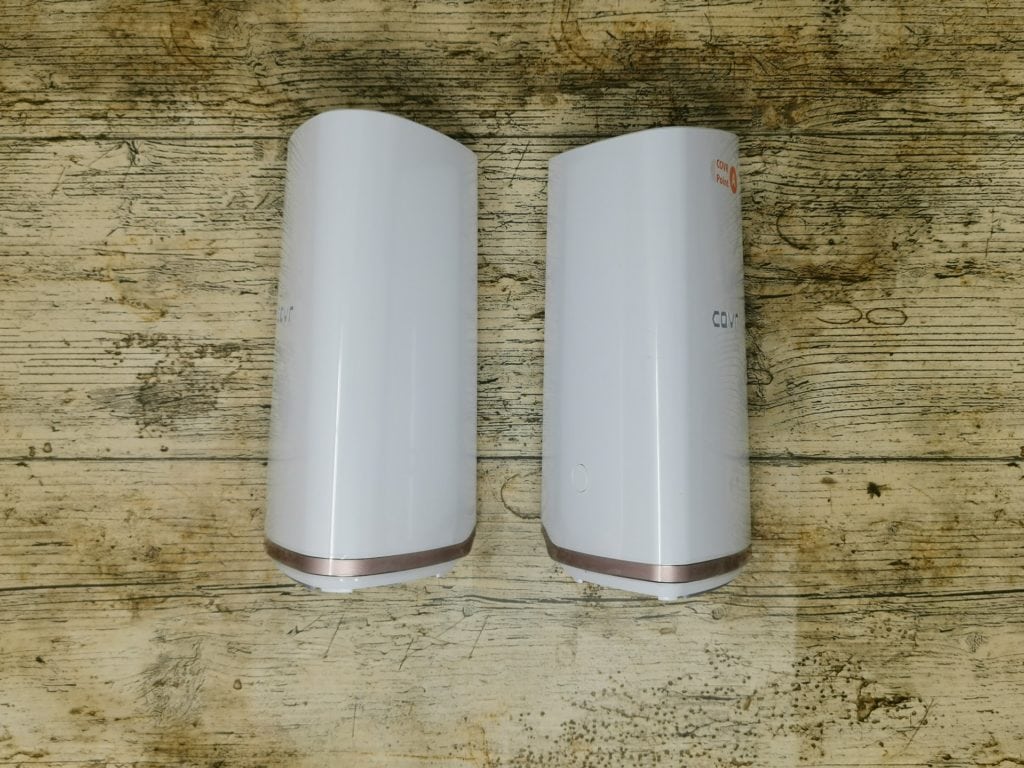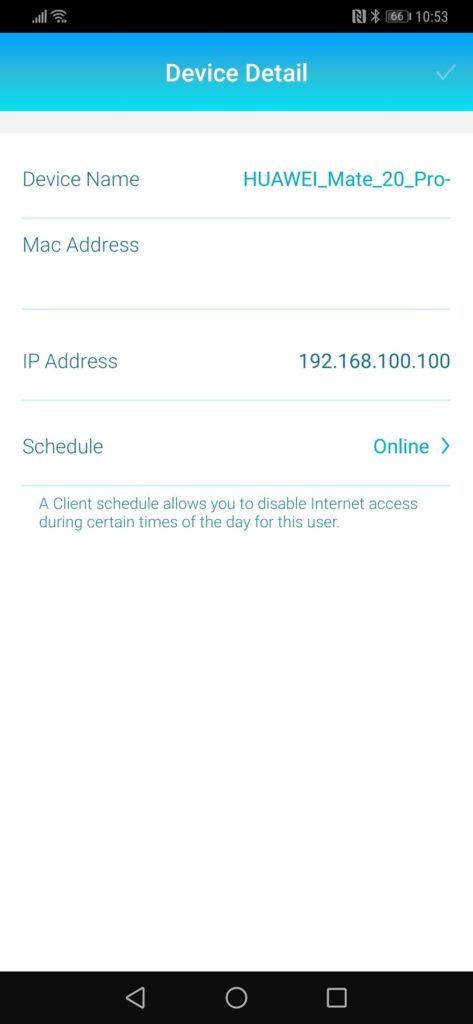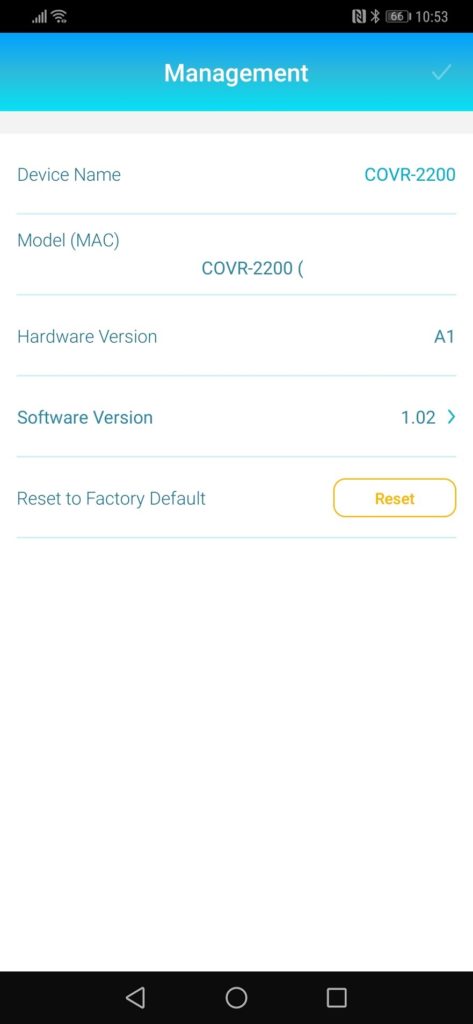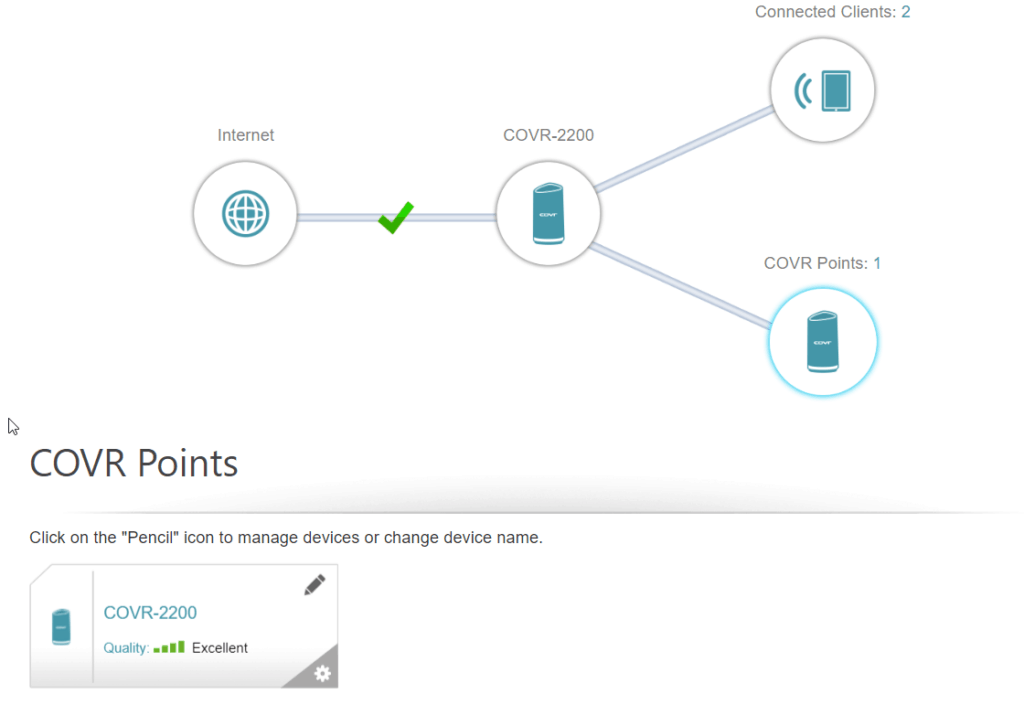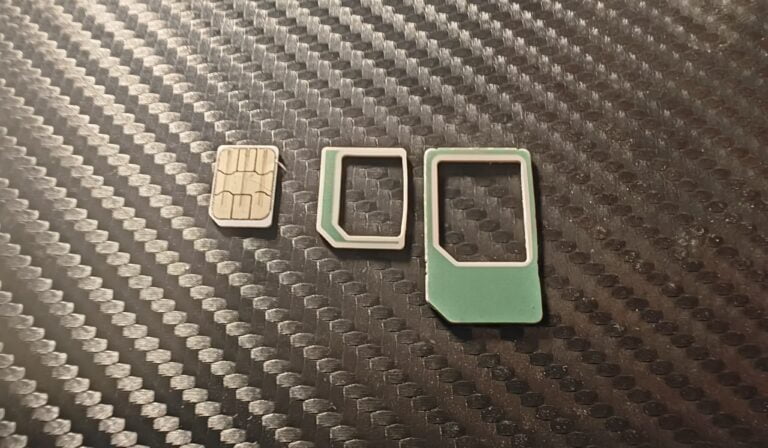Any links to online stores should be assumed to be affiliates. The company or PR agency provides all or most review samples. They have no control over my content, and I provide my honest opinion.
D-Link has multiple COVR Wi-Fi Mesh systems available, and the COVR-2202 sits at the top of the pack with a current price of £231.54 on Amazon. In recent months it has been as low as £159.99.
This system is a triband mesh system using a dedicated 5 GHz backhaul which can achieve combined speeds of 2.2Gbps while covering up to 550 sqm. The pack includes two devices, and at the moment there is no three-pack option or the option to add additional satellites.
Competing products include the TP-Link Deco M9 Plus which currently costs £249.99 and the Netgear Orbi RBK20 which presently costs £224.00 so pricing for the COVR-2202 is competitive, especially if you can buy it for one of the lower rates seen on Amazon. There are of course many Mesh options, some more expensive, some less, but like for like comparisons are fewer.
[content-egg module=Amazon template=list]
The COVR-2202 is not that dissimilar to the Netgear RBK20 I have reviewed previously, they are both tower shaped, albeit different designs, but more importantly, they both feature two-port ethernet and a dedicated 5 Ghz back channel. Unlike the Netgear this does not appear to support Ethernet backhaul, however, with the Netgear, I have found it that problematic to the point where it is easier just to leave them in wireless mode with little to no drop-in performance.
The tri-band AC-2200 rating means it has two 866 Mbps 5Ghz radios and one 400 Mbps at 2.4Ghz. It has all the usual features you expect on a high-quality router nowadays including 802.11ac Wave 2 (which is the 5Ghz channel) and MU-MIMO which supports multiple concurrent connections.
Set up
Set up is done via the mobile app, on the Play store it does not have the best reviews with 2.7 out of 5 with over 1000 reviews. However, during my usage, I had no problems at all with it, and I found it easier to set up than the Netgear Orbi.
The set up is very straightforward, I plugged my devices is, placing one next to my Virgin router and the other at the far end of my house. The unit themselves are relatively attractive as far as these things go, they can pass off as a desktop ornament and are certainly more attractive than many traditional routers.
Once I downloaded the app, I scanned in the QR code on the quick install guide and went through the basic set up instructions. This included the app connecting to the default Wi-Fi then making me assign my own SSID and password. There was a bit of waiting while it connected to things, and updated the routers but overall, I was done within 10 minutes and the Wi-Fi was connected and working straight away. Assuming the set up went OK then the COVR logo on the front of each node should glow white.
Performance
I live in a reasonably sizeable 4-bedroom house made from Accrington brick, back in the days when mesh Wi-Fi systems did not exist, getting a decent signal around the house was impossible without running two sperate routers and the associated problems with running either 2 SSIDs or one and hoping they pass off to each other OK.
Carrying out the simplest of tests, I went around my house with my Mate 20 Pro and ran the SpeedTest.Net app. I have 350MB Virgin so it can test the Wi-Fi throughput reasonably well.
Performance inside the house was much better than expected, I carried out multiple tests in each room to make sure they were accurate. It is worth noting that the Wi-Fi performance is dependant on the client too, I used the Mate 20 Pro and Dell XPS 15, and I suspect that it is these that are the weak link for Wi-Fi speeds.
In my office which is one room away from a node through a thick wall the COVR achieved 217Mb/s down and 21Mb/s up whereas me Netgear Orbi achieved 192.3Mb/s down and 21Mb/s up.
In the front room when the primary node is located the COVR achieved 270Mb/s with 21Mb/s up but the Netgear managed 306Mb/s with 21Mb/s up.
These results were almost matched in the bedroom near the satellite node, and similar when in the second living room away from the devices.
While testing both systems, I did notice a lot of variation between multiple tests. Both systems had occasional low speeds, and I suspect this could be due to my phone taking a while to switch between satellites.
I also have some gym equipment in my garage, which is brick built and across the garden from the house. With the Netgear, I used the third satellite to achieve good speeds in the garage, but with the two system COVR it had to rely on the node sitting in the bedroom. So the signal needed to go through a thick outdoor wall, across the garden then into the garage. The performance was not great as you might expect. Things started out OK, my phone could see the signal and I managed to get 21.9Mb/s down, but mid-way through the upload test my phone decided the signal was not strong enough and switched to mobile data. To this date, I have not had a device reach from the house to the garage successfully, and I would regard the result of this as better than average.
Local file transfers matched the above speeds with me being able to achieve 22 to 43MB/s transferring from my server to the NVME drive of my laptop across multiple rooms around the house (not the garage).
So, in my house at least, I found both systems performances similar, the Netgear appeared to have the slight edge for maximum speeds, but the COVR had a slight edge for speeds over a distance. In reality, I suspect they are identical performance wise, and it will be just the channel selection and minor location differences that give the marginally different results
App and Management
The mobile app is extremely basic, you use it to set up the system and you can then change the SSID in the future if you want, plus do some basic diagnostics, but that is about it. In general, for most people, including me, that’s all you really need. This is only providing the Wi-Fi for my home, I have my Fritzbox providing all the DHCP settings and various other network settings I have applied.
However, if you want access to more advanced settings, thankfully D-Link provides a web interface and it is quite feature rich. From this, you are able to optimise the location of your satellite based on its signal quality. You can also manage all the clients connected to the router which includes things like parental controls and schedules.
Under the features tab, you have enough options to accommodate most requirements comfortably. This even includes a VLAN option allowing you to separate Internet, IPTV and VOIP. There are also various firewall options including a DMZ, anti-spoof checking, and IPv6 Simple security.
Overall
I had quite low expectations of the D-Link COVR, the system does not have that many reviews on Amazon so I was expecting it to not be amazing. However, it pleasantly surprised me, it was very easy to set up, performance is as good if not better than competing brands, including the Netgear Orbi RBK20, and the connection has remained stable throughout my testing. Overall I can find no significant issues with it and performance is excellent.
Pricing is a big factor with these systems, at £231.54 it is currently a little bit more expensive than the Netgear but it is cheaper than the TP-Link Deco M9 Plus. There is the Netgear RBK40 which technically has a better spec with its 4 ethernet ports, but is an older system, and has a current pricing of £185.95.
However, overall I think the D-Link COVR-2202 justifies its cost, and if you can pick it up for under £200 I would say it will be a great investment.
Summary
An easy to use mesh Wi-Fi system that provided stable performance throughout my large semi-detached house. It is priced competitively and offers the same level of performance as other well reviewed competing products.
Overall
83%-
Features - 78%78%
-
Wi-Fi Performance - 90%90%
-
Ease of use - 85%85%
-
Price - 80%80%
I am James, a UK-based tech enthusiast and the Editor and Owner of Mighty Gadget, which I’ve proudly run since 2007. Passionate about all things technology, my expertise spans from computers and networking to mobile, wearables, and smart home devices.
As a fitness fanatic who loves running and cycling, I also have a keen interest in fitness-related technology, and I take every opportunity to cover this niche on my blog. My diverse interests allow me to bring a unique perspective to tech blogging, merging lifestyle, fitness, and the latest tech trends.
In my academic pursuits, I earned a BSc in Information Systems Design from UCLAN, before advancing my learning with a Master’s Degree in Computing. This advanced study also included Cisco CCNA accreditation, further demonstrating my commitment to understanding and staying ahead of the technology curve.
I’m proud to share that Vuelio has consistently ranked Mighty Gadget as one of the top technology blogs in the UK. With my dedication to technology and drive to share my insights, I aim to continue providing my readers with engaging and informative content.




